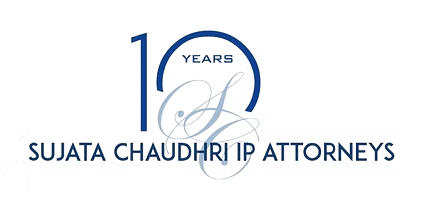11 Effective Meeting Follow-up Strategies
Strategic, personalized, and frequent follow-ups can be the golden ticket for your trademark business growth.

When it comes to trademark business development, it can be difficult to distinguish oneself from other trademark attorneys and firms. However, one area that can be very effective but is often neglected is the follow-up after a meeting.
As a trademark attorney, your follow-up after meetings can make a big difference in securing new clients and cases. In this blog post, you’ll find 11 effective follow-up strategies that can set you apart from your competitors and help you land your next client.
Overview
1. Speed networking is old news
2. Commenting is the new liking
3. Use IP data to ignite collaboration
4. Propose a small pilot project
5. Initiate the reciprocity cycle
6. Stay top of mind without spamming
7. Share your trademark victories
8. Co-create LinkedIn content
9. Leverage instant reciprocity with WeCrest
10. Schedule a follow-up call
11. Consistent follow-up is key
1. Speed networking is old news ⏱
When following up with someone, take your time and craft personalized messages reflecting on specific points from your conversation. Reference something specific that stood out to you, such as a shared interest or particular challenge they're facing. Keep the tone friendly and approachable, and ask open-ended questions to continue the conversation and deepen the relationship.
2. Commenting is the new liking 💬
Spark conversation by commenting on your new connections’ LinkedIn posts. By commenting on their posts, you show that you're paying attention to what they have to say and increase the likelihood that they'll see your own LinkedIn posts in their feed. This can lead to more profile views, connection requests, and, ultimately, business opportunities. So next time you're scrolling through your feed, take a few extra minutes to leave a thoughtful comment on a connection's post and keep the conversation going.
3. Use IP data to ignite collaboration 📊
Monitor provisional Madrid trademark refusal data using WeCrest. This offers unique opportunities to reach out to new clients with advice on their recent cases in your jurisdiction. By demonstrating your expertise in recent cases, you can build trust and credibility with potential clients. Don't miss out on this unique opportunity to grow your trademark practice.
4. Propose a small pilot project 🚀
If a new client is reluctant about exchanging big cases, propose a small-scale pilot project. When it comes to establishing a new business partnership, it's understandable for clients to be cautious. After all, a long-term commitment requires a lot of trust and investment. That's why proposing a small-scale pilot project can be a smart move. By starting with a smaller project, both parties have the opportunity to assess the partnership and build trust before committing to a larger project. This approach can help establish a positive working relationship and set the foundation for successful collaborations in the future.
5. Initiate the reciprocity cycle 🔄
Challenge the status quo by sending work first. This proactive move demonstrates your trust in the potential partnership and often encourages a reciprocal response. In the trademark prosecution business, it's easy to fall into the trap of waiting for the other party to make the first move. However, challenging the status quo by sending work first shows that you trust the other party and are willing to work with each other. So next time you're hesitant to take the first step, remember the potential benefits and go for it.
6. Stay top of mind without spamming 🔝
Ensure you're on your connections' radar by sharing relevant content or unconventional insights regularly. In today's fast-paced world, it's more important than ever to ensure that you're staying top of mind with your connections. One powerful way to do this is to regularly share relevant content or unconventional insights that will capture their attention. By doing so, you'll not only get noticed but you'll also be remembered as someone who provides valuable knowledge and insights. With a little bit of effort and consistency, you'll be amazed at how much your network grows and how many doors will open for you.
7. Share your trademark victories 🏆
Sharing anonymized client stories about how you've overcome challenges in international trademark cases not only highlights your expertise but also provides valuable learnings for your connections. As a trademark professional, you understand the complexities of protecting intellectual property rights across borders and jurisdictions. By sharing your experiences and successes, you can provide valuable insights into the strategies and tactics that work best in different situations. This can be especially helpful for others in the industry who may be facing similar challenges and can also demonstrate your thought leadership and expertise.
8. Co-create LinkedIn content 🥇
Propose a collaboration on a LinkedIn post or article. Are you interested in writing a thought leadership piece comparing practices in international trademark prosecution regarding your two jurisdictions? Co-creating the post or article with a partner fosters a strong partnership and expands your professional reach. By sharing your work on LinkedIn, you can reach both networks and gain more visibility, potentially attracting new business opportunities.
9. Leverage instant reciprocity with WeCrest ✅
Create a win-win scenario by assigning your next international case to an agent who recently faced a Madrid refusal in your jurisdiction as well (i.e., “tit for tat”). Instant reciprocity becomes a game-changing strategy in building partnerships quickly as it not only helps you find an agent for your case quickly but also benefits your own firm in the long run as you can expect more inbound work from that firm in the future.
10. Schedule a follow-up call 📞
Arrange a phone or video call to delve deeper into potential collaboration areas. This provides the perfect occasion to leverage IP data, discuss the trademark case volume, and address specificities and deadlines in your jurisdictions. By leveraging this opportunity, you can gain a better understanding of how your firms can work together and achieve mutual success.
11. Frequent follow-ups 🙋
When it comes to building successful partnerships, frequency is key. Regular check-ins every few months are essential to keep the conversation alive and ensure that both parties remain engaged. However, it's important to remember that these interactions should offer value and reinforce the potential benefits of the partnership.
Strategic, personalized, and frequent follow-ups can be the golden ticket for your trademark business growth. Remember, you're not just networking; you're building relationships. Make each interaction count. And when you look back, you'll see how each relationship has compounding effects on your trademark business. It’s better to have a few deep compounding relationships than many shallow, non-compounding relationships.
Receive the latest articles, IP insights, and offers from WeCrest.
We respect your time and inbox hygiene.



.png)




